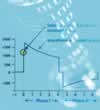
Historically, monophasic defibrillators delivered very similar defibrillation waveforms, known as monophasic dampened sine (MDS) waveform with an escalating energy sequence of 200, 300, and 360 joules. This therapy, although largely speculative and anecdotal, remained the "gold standard" of external defibrillation for years.
Following the pioneering work of Philips Medical Systems Heartstream Division, which introduced external biphasic defibrillation to the world, all manufacturers now incorporate some type of biphasic waveform into their defibrillation therapy.
When Philips developed external biphasic defibrillation, they broke entirely new ground, extensively proved their findings under intense scrutiny, and patented their technology. The result was a unique impedance-compensating fixed low-energy defibrillation waveform, that data show hits the defibrillation "sweet spot" for treating humans in cardiac arrest - SMART Biphasic Defibrillation - Only from Philips.
Although all manufacturers now use the term "biphasic" to describe their defibrillation waveform, the similarity ends there. And numerous patents prevent other manufacturers from delivering this proven therapy.
Review of brochures from many manufacturers shows that most are able to furnish data that "prove" their defibrillation waveform. Generally, these studies are conducted in very controlled laboratory conditions, and on animals. And sometimes, they produce very interesting, even dramatic results, inconsistent with real-world findings, in an effort to bolster the claims of the manufacturer. In the end, only Philips SMART biphasic is the most studied and clinically real-world proven defibrillation waveform in existence.
Summary of Real-World Biphasic Defibrillation Trials
Some manufacturers have chosen to continue using "higher" energy waveforms, and assert that "real world" scenario victims might need more energy. Although entirely speculative, this argument seems to ring true with many experienced providers that are used to having to escalate energy with older monophasic defibrillators. And it's very tempting to some to believe that "more is better". However, newer evidence is confirming that higher energy is undesirable as it does not result in any improvement in defibrillation efficacy, even for large patients, and higher energy is closely related to post-shock injury to the heart.
Current vs. Energy
Body Weight
Further discussion of the design and effectiveness SMART Biphasic and competitor waveforms, and discussions of the SMART Analysis system can be found here:
Back to Top